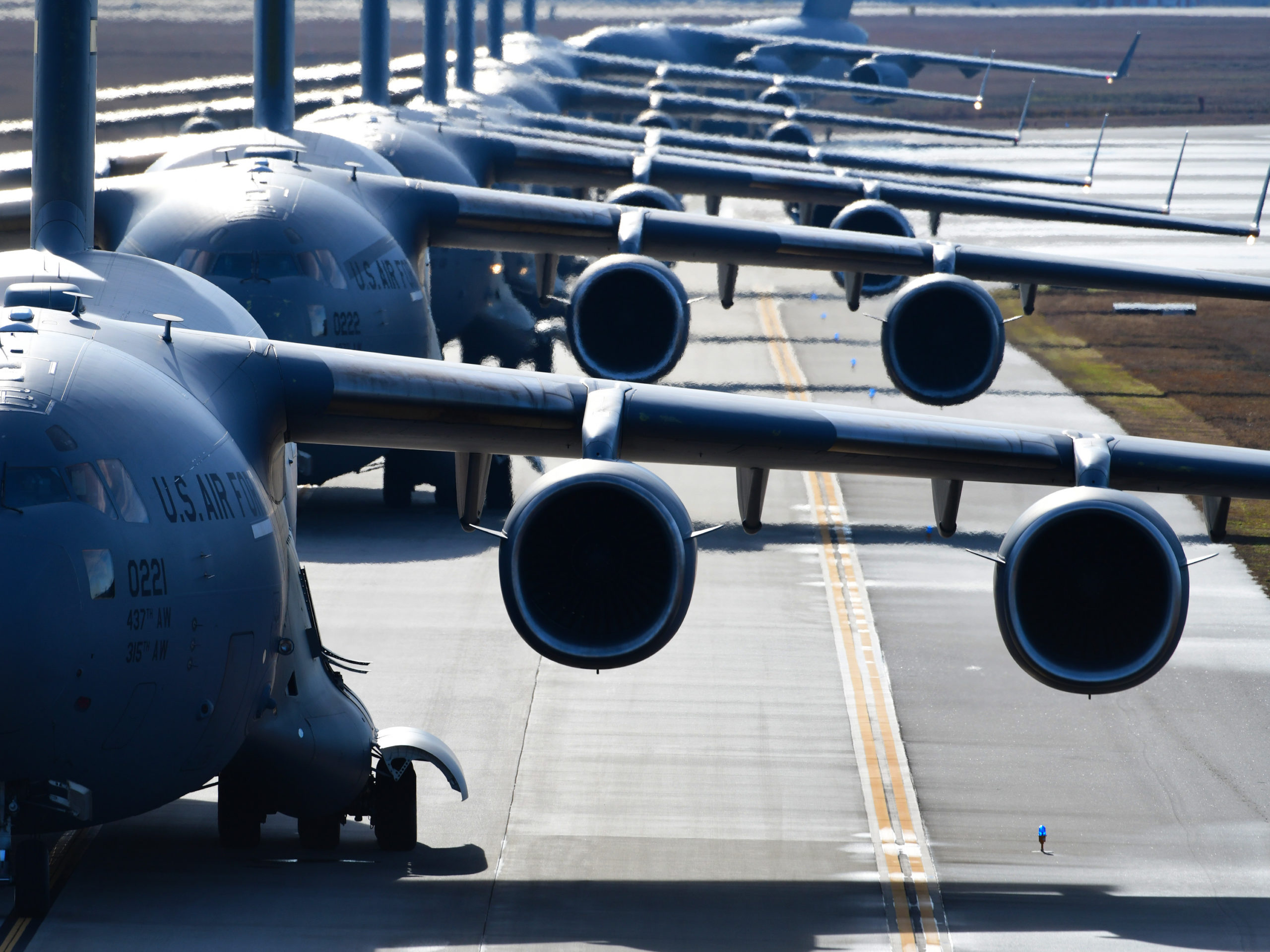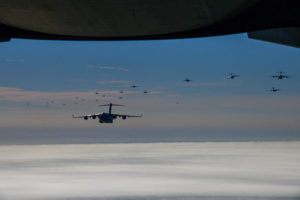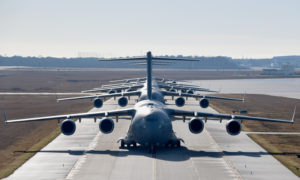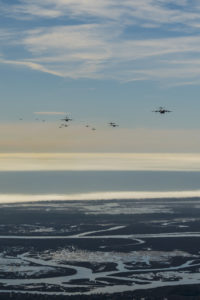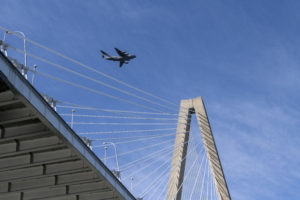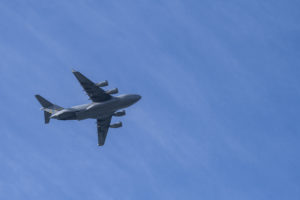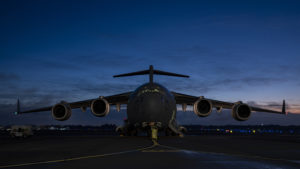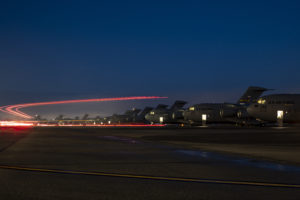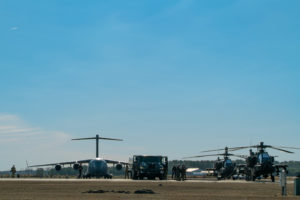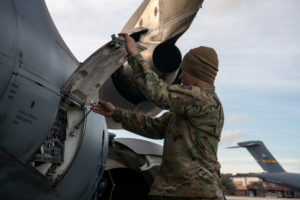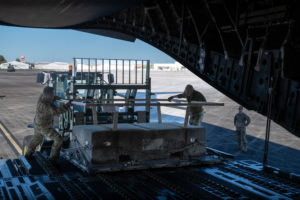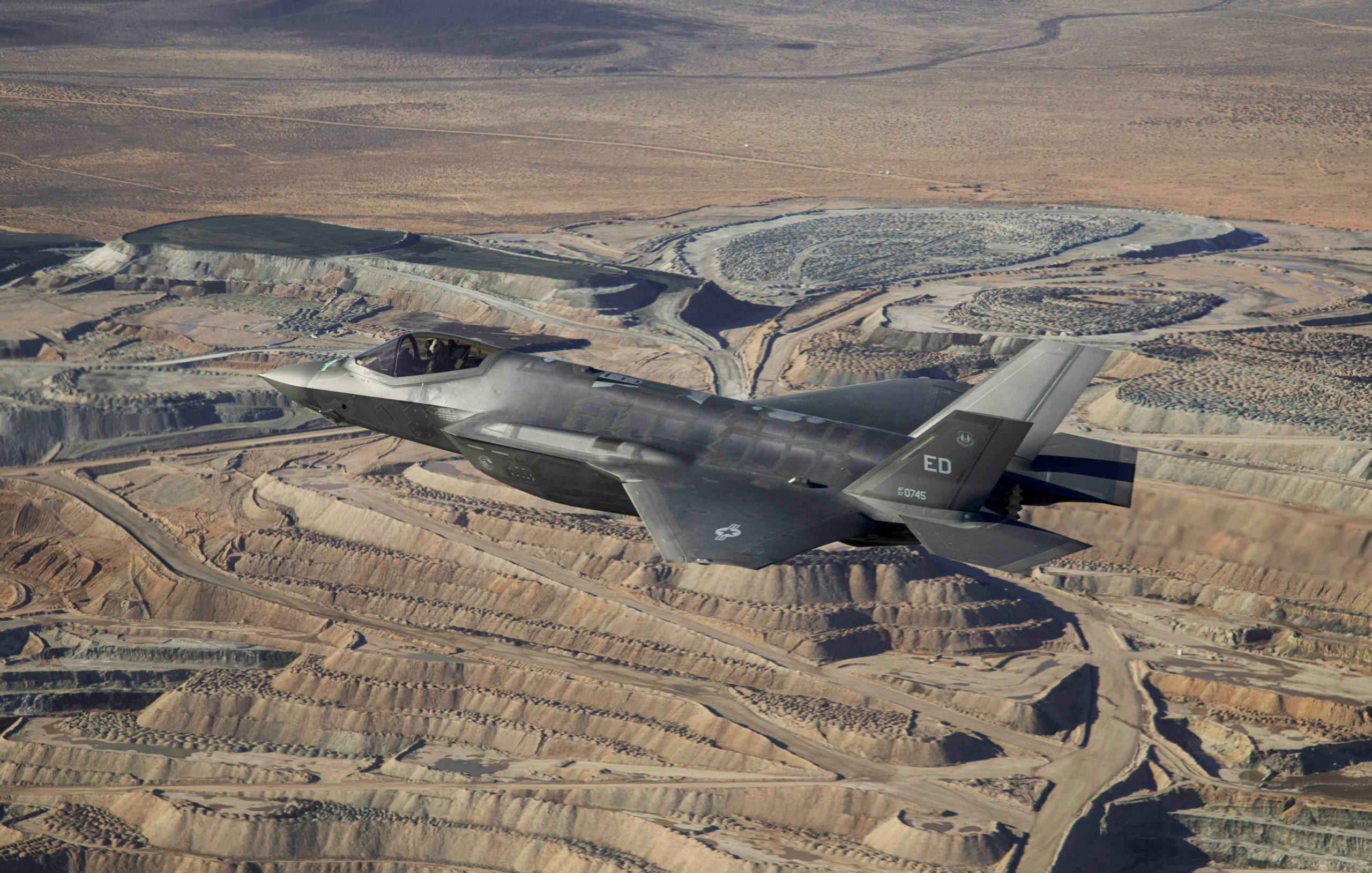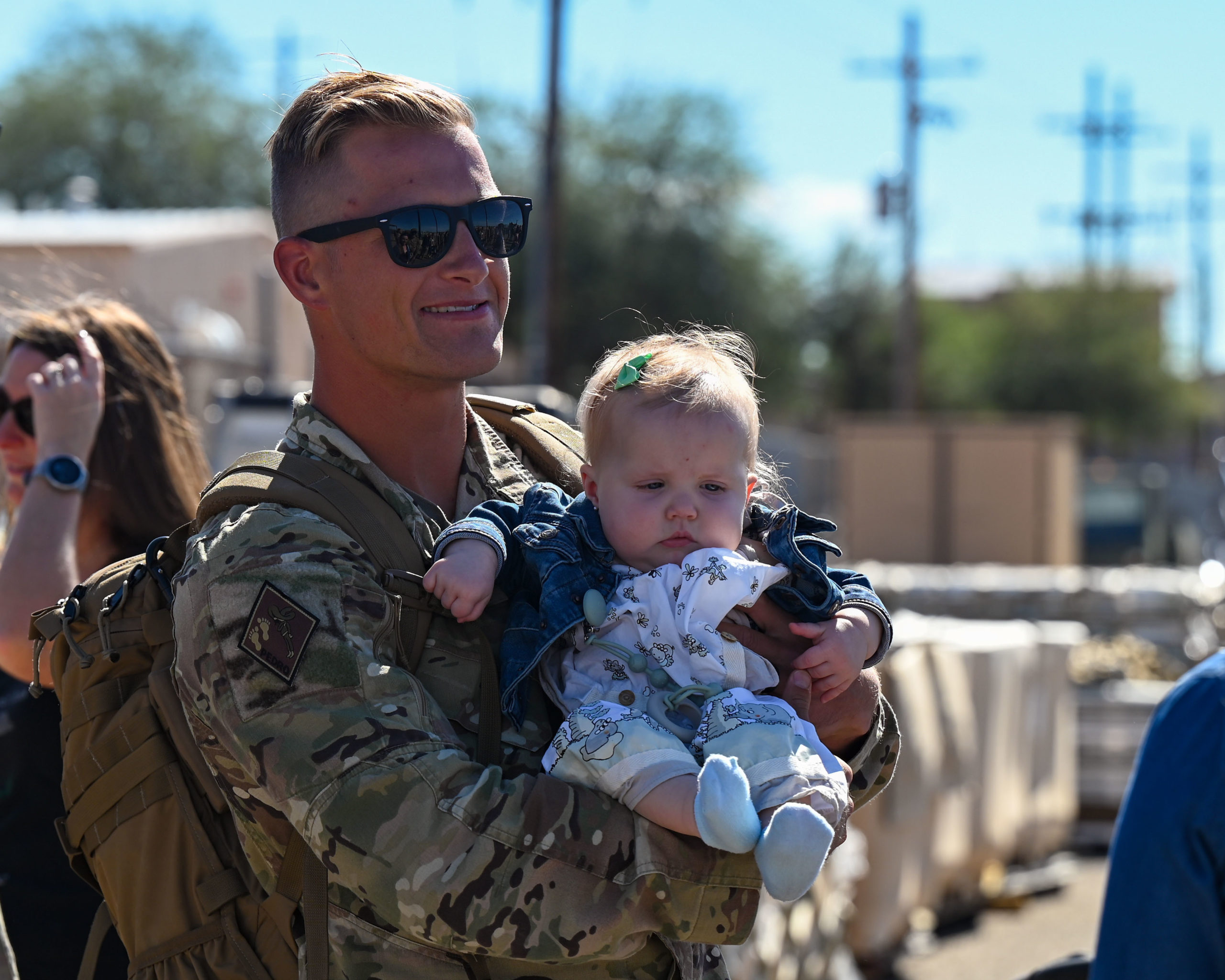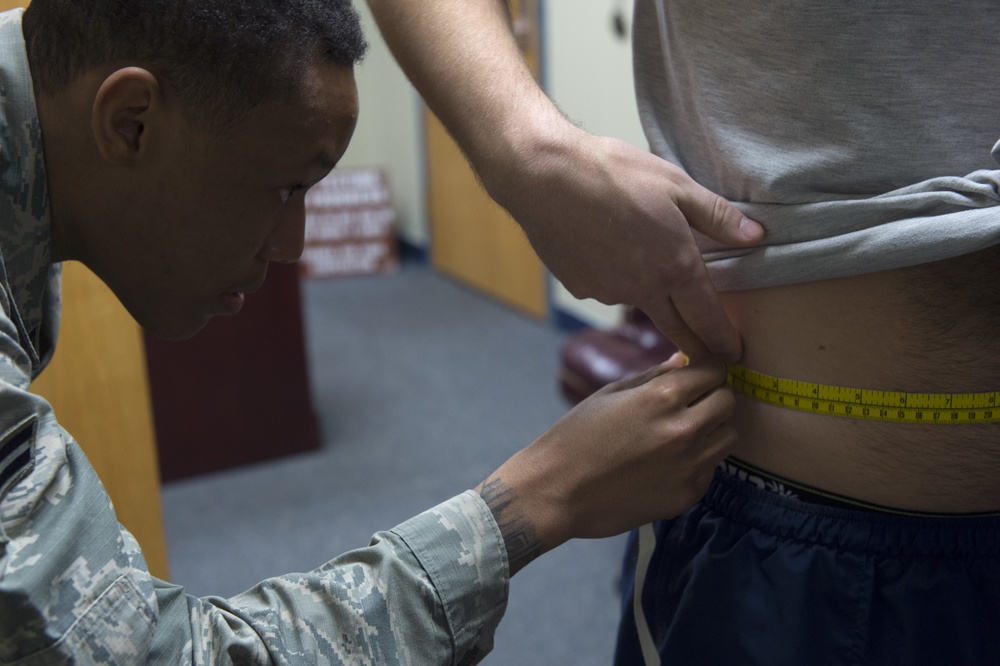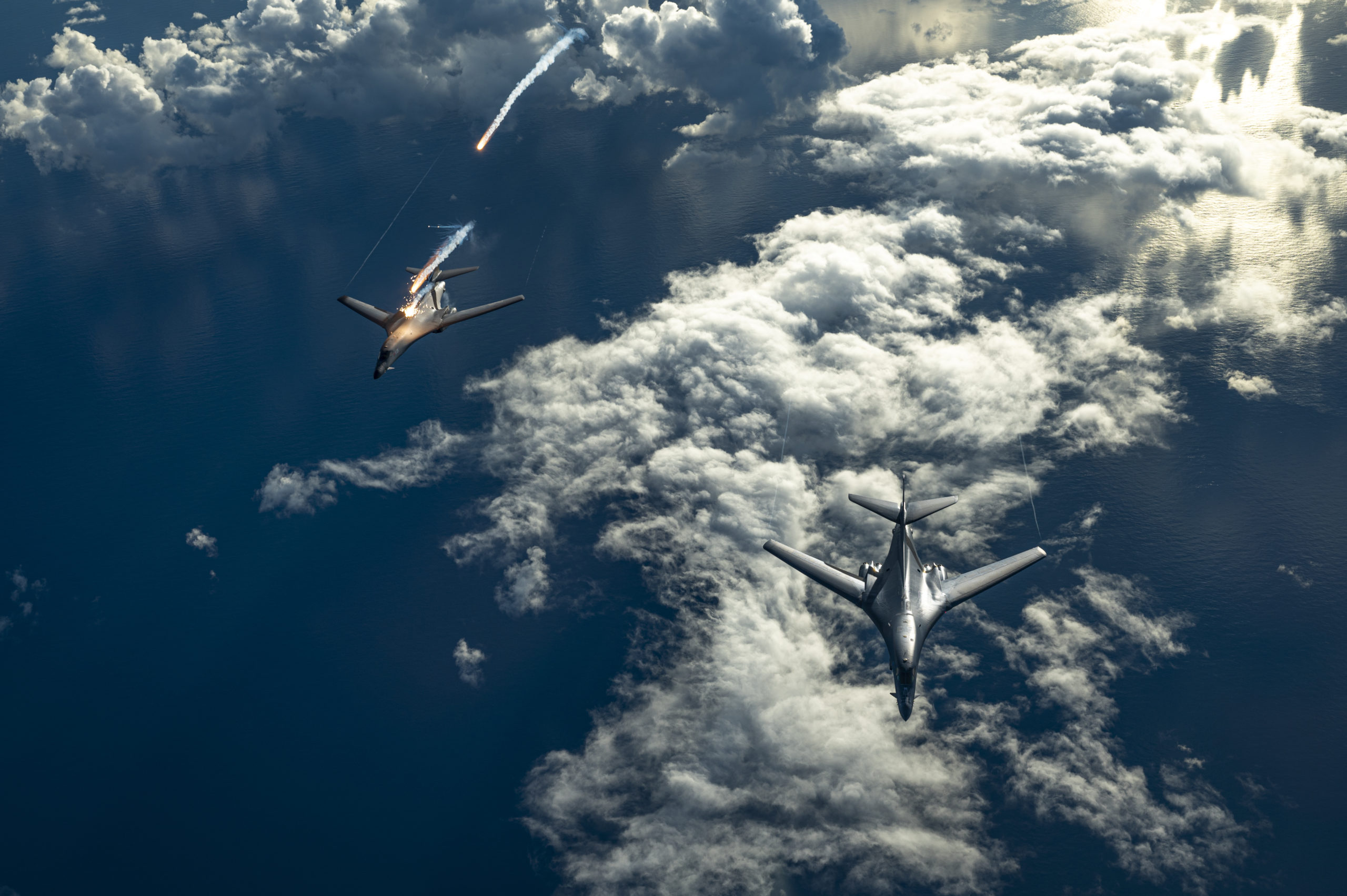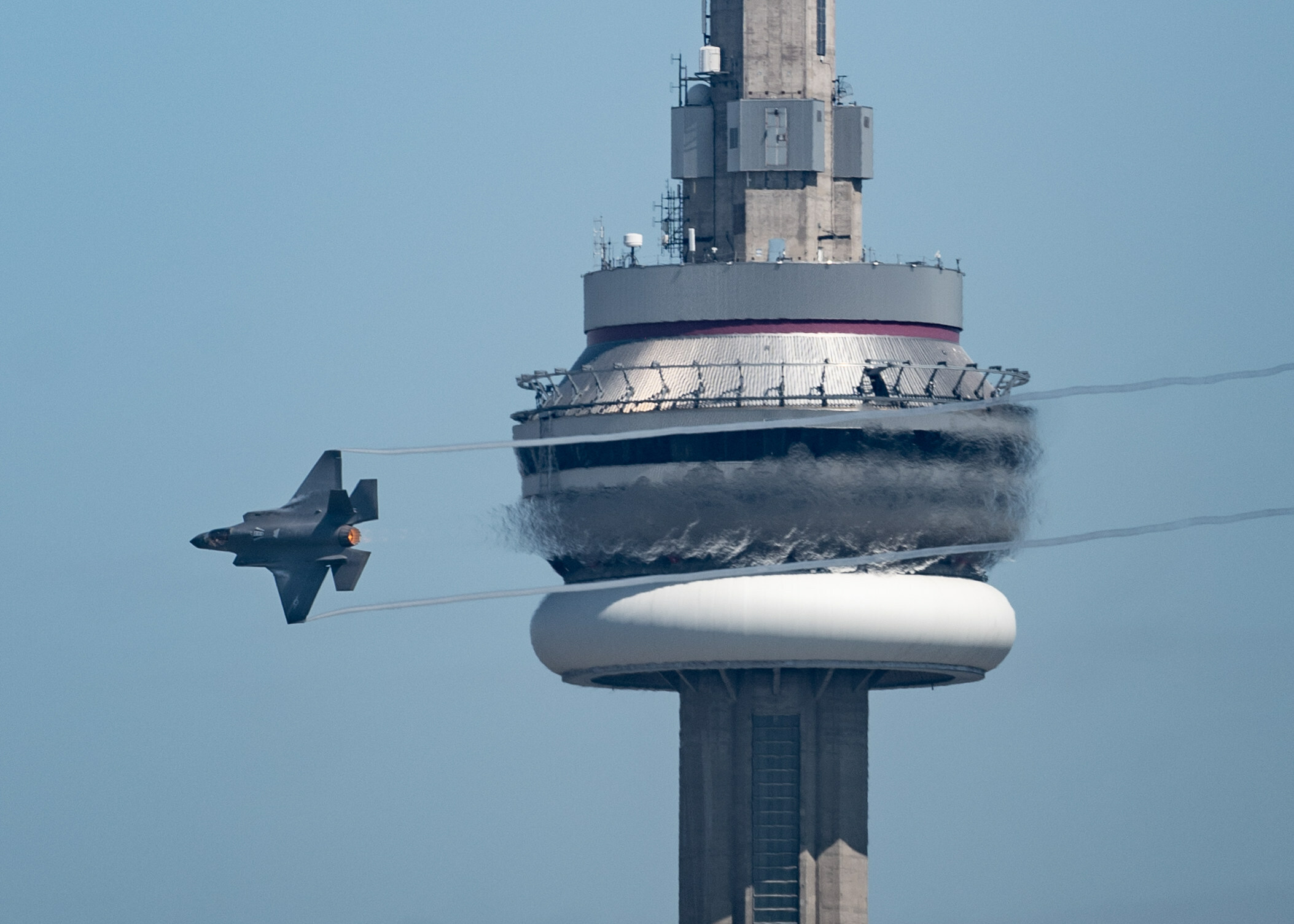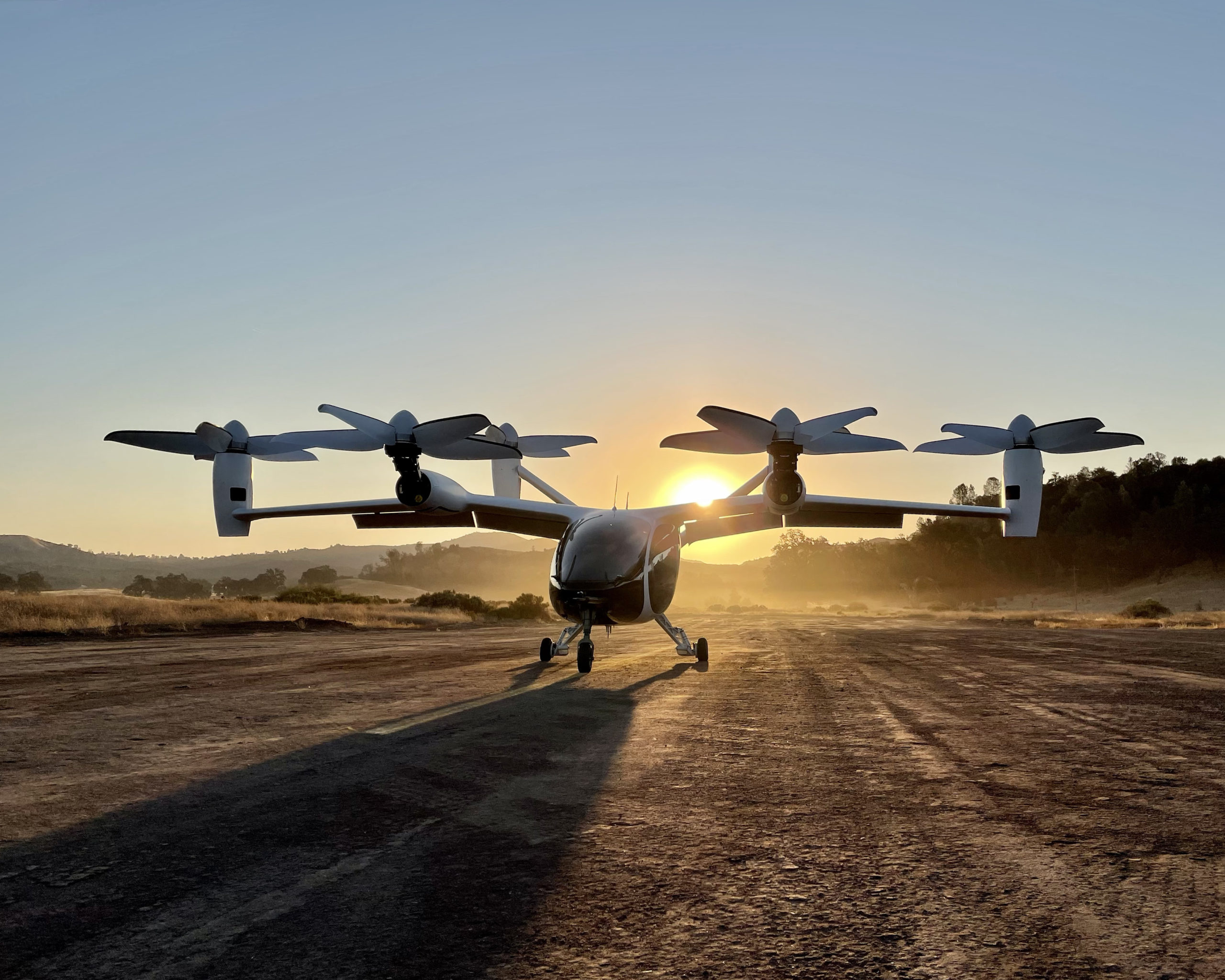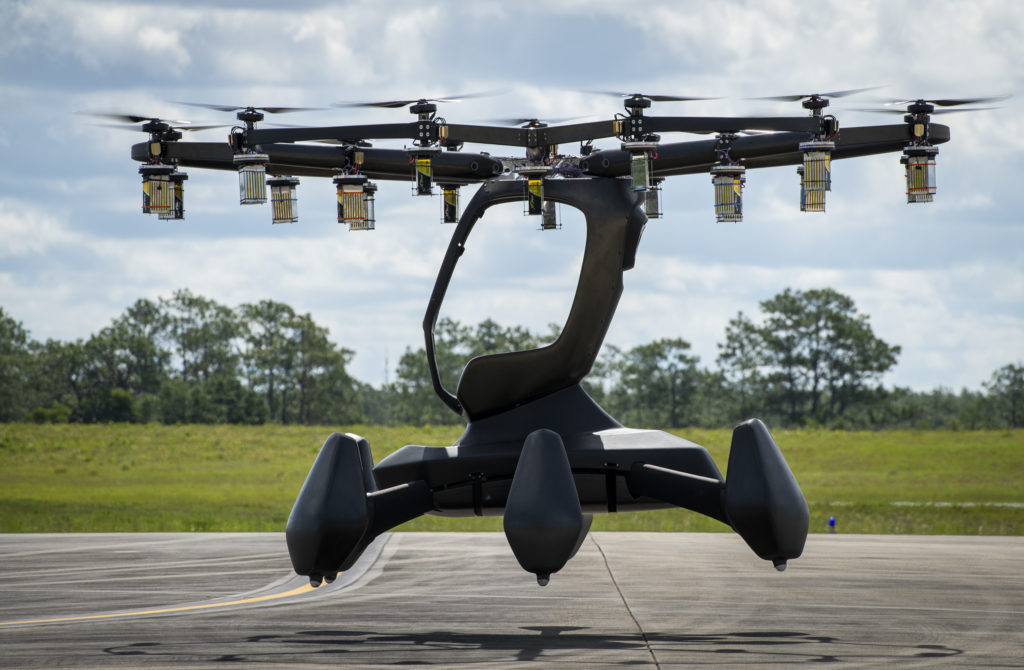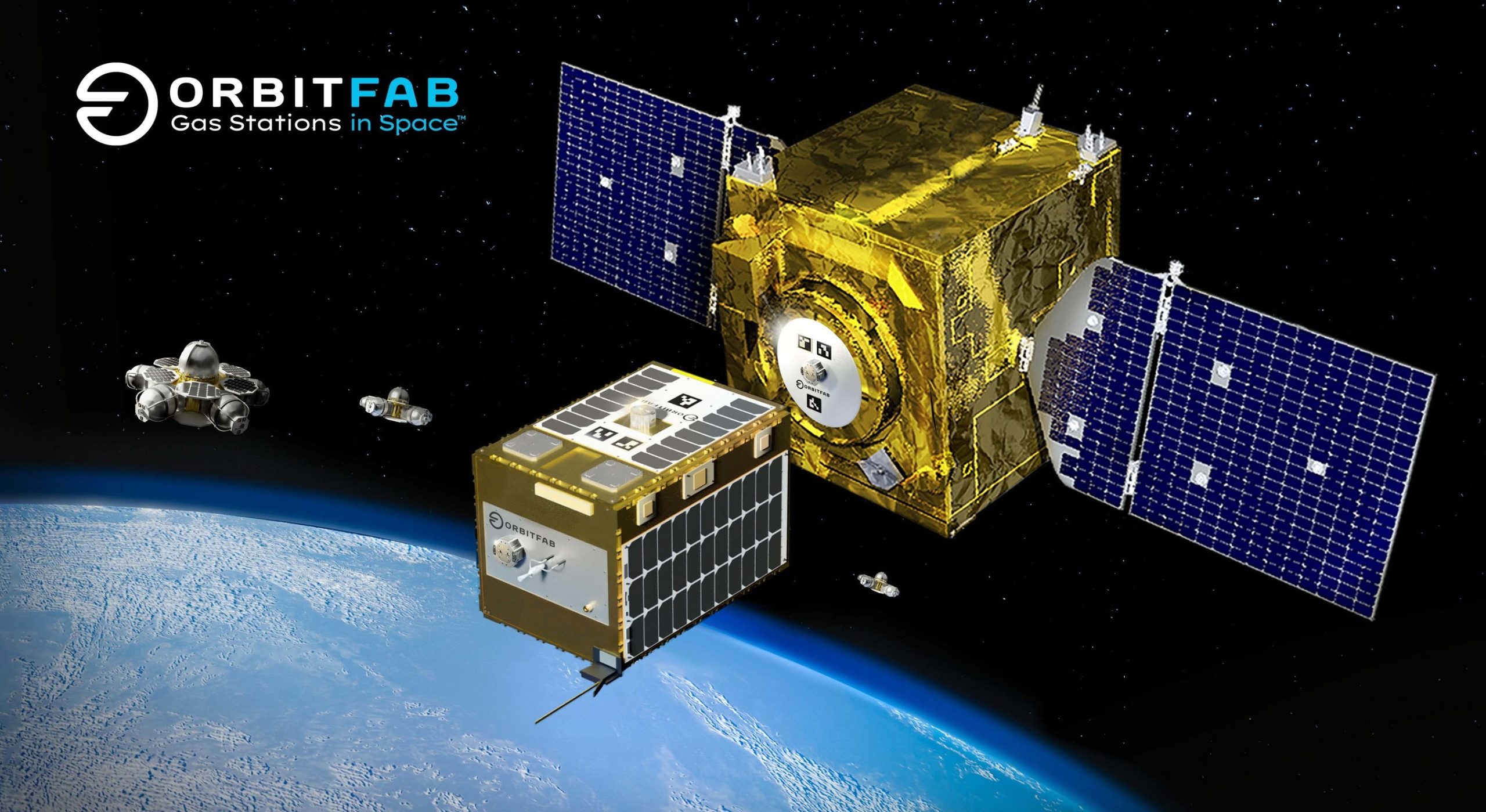Two dozen C-17s took off from Joint Base Charleston, S.C., on Jan. 5, the most C-17s to ever launch together from a single base.
The display of airpower opened with an elephant walk of Globemaster IIIs and included a flyover above the city of Charleston. The maneuvers were part of a broad-ranging force generation exercise that included Air Force, Army, and Marine Corps units all across the Southeast.
The 24 Globemaster IIIs included more than half the 437th Airlift Wing’s inventory and one in 10 of all the C-17s in the entire U.S. Air Force. Also involved in the exercise were F-16 fighters, KC-135 tankers, and an E-3 AWACS aircraft, for a total of nearly 60 aircraft in the operation, according to a release.
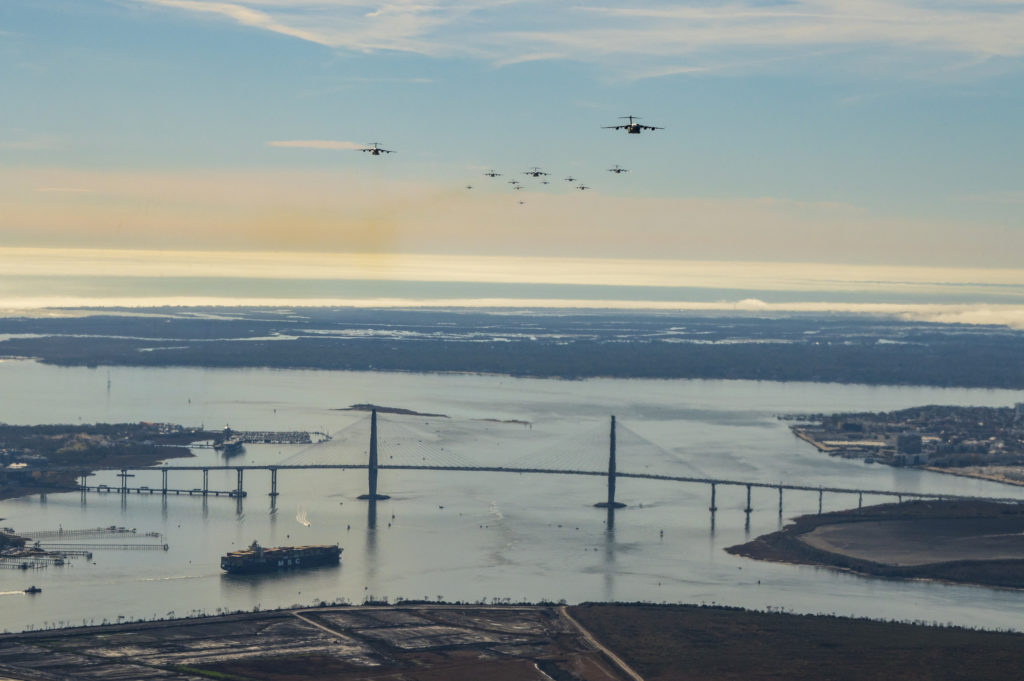
After the Charleston flyover, the C-17s split into four groups to focus on different mission sets under the umbrella of Agile Combat Employment: command-and-control, navigation, tempo, and logistics under fire. Specifically, the four groups dispersed to Pope Army Airfield, N.C.; Marine Corps Air Station Cherry Point, N.C.; Marine Corps Air Station Beaufort, S.C.; and Hunter Army Airfield, Ga.
ACE is the Air Force’s operational concept of dispersing forces from large central bases into smaller groups that can operate in remote or austere environments, moving quickly as needed with Airmen sometimes performing tasks outside of their usual career fields.
“We have to fight to get to the fight,” Col. Robert Lankford, 437th Airlift Wing commander, said in a statement. “This exercise tests our ability to accomplish the mission, while geographically dispersed and with limited communications.”
At Pope, Airmen established a tactical operations center alongside a Joint Communications Support Element from MacDill Air Force Base, Fla., while special tactics Airmen performed a static-line jump to secure a dirt landing strip.
At Cherry Point, aircrews loaded High Mobility Artillery Rocket Systems (HIMARS) onto the aircraft, then flew to Pope to practice HIMARS rapid infiltration, in which the system is quickly unloaded and readied for use.
At Beaufort, the C-17s performed an “integrated combat turn” and refueled U.S. Army AH-64 Apache helicopters. And at Hunter, Airmen practiced maneuvering cargo under fire, operating outside of their primary duties.
“What we’re practicing are flexible deterrent and flexible response options,” said Maj. Zachary Barry, a C-17 pilot and the lead planner for the exercise, in a release. “If we can move really quickly, it makes it harder for the adversary to respond.”
In addition to the 437th Airlift Wing, Airmen from the 24th Special Operations Wing, 315th Airlift Wing, 169th Fighter Wing, and the Joint Communications Support Element participated in the exercise, among others.
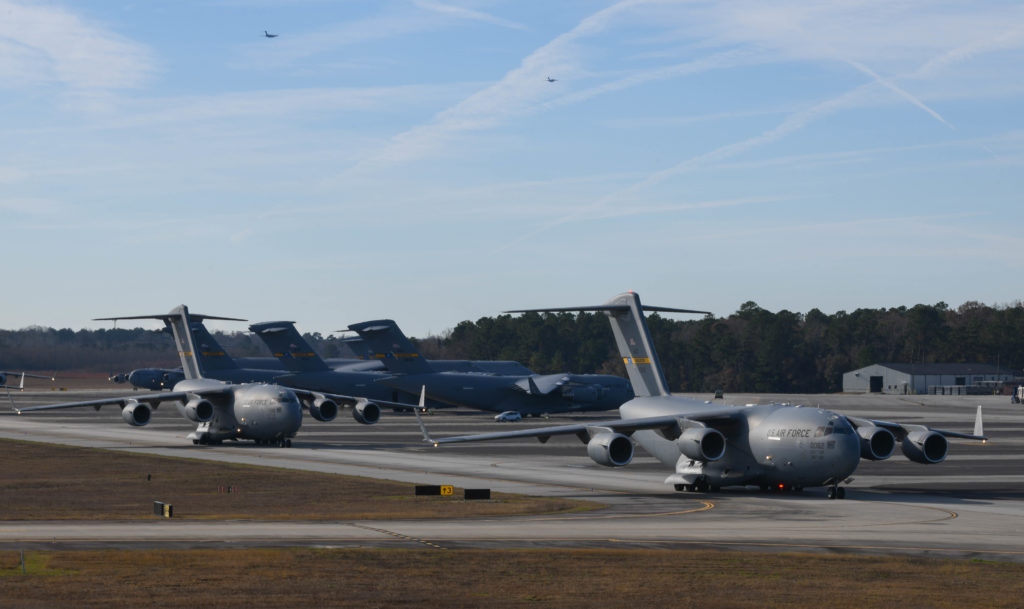
“Every day, we are learning new lessons that we want to apply in combat, so this mission generation exercise is a chance to test our capabilities at a tempo and scale that approximates combat operations,” 18th Air Force commander Maj. Gen. Corey Martin said in a statement.
A workhorse long-range airlifter, the C-17 and its aircrews at Joint Base Charleston were drawn into the spotlight in August 2021 during the noncombatant evacuation out of Afghanistan. With thousands of Afghan civilians, U.S. personnel, and citizens from allied nations seeking to flee the Taliban, the Air Force deployed dozens of C-17s to Hamid Karzai International Airport in Kabul every day for weeks, where they ferried out more than 124,000 people to safety, the largest airlift in history.
Airmen from the 437th Airlift Wing and the Air Force Reserve’s 315th Airlift Wing played a key role in the evacuation, and this past November, Air Mobility Command boss Gen. Mike Minihan visited the base to award 51 Distinguished Flying Cross medals to Airmen who participated in the operation—one of the largest DFC ceremonies in recent history.
